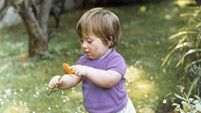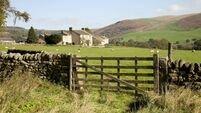Where cow dung doesn’t go to waste
This unique area, in counties Clare and Galway, is the focus of research by scientists and €1m is to be spent there each year, for the next three years, to support high environmental value farming, with a tourism spin-off. Wonders never cease in the beautiful Burren, and something new is being discovered about the place all the time. It can be safely assumed, nevertheless, that every schoolboy did not know about the latest discovery in relation to the area’s ancient history.
Botanists from University College Galway (UCG) have used a most unlikely source – fungi that grow on cattle and sheep dung – to shed new light on farming, fado fado, and its impact on the Burren. Using old and new techniques, involving the study of fungi that grows only on cattle and sheep dung, they can show how farming waxed and waned over the past 3,500 years and how this shaped the Burren’s extraordinary plant life. Their findings are published in the British Ecological Society’s Journal of Ecology. Dr Ingo Feeser and Professor Michael O’Connell, both from UCG, collected peat and soil samples from upland areas of the Burren. Peat, because it preserves pollen, holds secrets and records of past plant life. But scientists have only recently realised that peat also preserves other fossils, such as fungal spores from dung thousands of years old. By using both these techniques and radiocarbon dating, Feeser and O’Connell have uncovered the history of upland farming in the Burren, and the major role that cattle and sheep grazing has played in shaping the area’s plant life and landscape.














